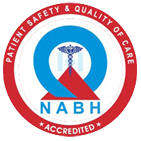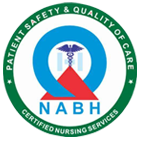FOLLOW THE MISSION HOSPITAL




Microbes are living organisms that multiply frequently and spread rapidly. They include bacteria (e.g., Staphylococcus aureus, which causes some staph infections), viruses (e.g., influenza, which causes the flu), fungi (e.g., Candida albicans, which causes some yeast infections), and parasites (e.g., Plasmodium falciparum, which causes malaria). Some microbes cause disease and others exist in the body without causing harm and may actually be beneficial.
Microbes are constantly evolving enabling them to efficiently adapt to new environments. Antimicrobial resistance is the ability of microbes to grow in the presence of a chemical (drug) that would normally kill them or limit their growth.
Antimicrobial resistance makes it harder to eliminate infections from the body as existing drugs become less effective. As a result, some infectious diseases are now more difficult to treat than they were just a few decades ago. As more microbes become resistant to antimicrobials, the protective value of these medicines is reduced. Overuse and misuse of antimicrobial medicines are among the factors that have contributed to the development of drug-resistant microbes.
Microbes, such as bacteria, viruses, fungi, and parasites, are living organisms that evolve over time. Their primary function is to reproduce, thrive, and spread quickly and efficiently. Therefore, microbes adapt to their environments and change in ways that ensure their survival. If something stops their ability to grow, such as an antimicrobial, genetic changes can occur that enable the microbe to survive. There are several ways this happens.
In the presence of an antimicrobial, microbes are either killed or, if they carry resistance genes, survive. These survivors will replicate, and their progeny will quickly become the dominant type throughout the microbial population.
Most microbes reproduce by dividing every few hours, allowing them to evolve rapidly and adapt quickly to new environmental conditions. During replication, mutations arise and some of these mutations may help an individual microbe survive exposure to an antimicrobial
Microbes also may get genes from each other, including genes that make the microbe drug resistant Societal Pressures
The use of antimicrobials, even when used appropriately, creates a selective pressure for resistant organisms. However, there are additional societal pressures that act to accelerate the increase of antimicrobial resistance.
Selection of resistant microorganisms is exacerbated by inappropriate use of antimicrobials. Sometimes healthcare providers will prescribe antimicrobials inappropriately, wishing to placate an insistent patient who has a viral infection or an as-yet undiagnosed condition.
More often, healthcare providers must use incomplete or imperfect information to diagnose an infection and thus prescribe an antimicrobial just-in-case or prescribe a broad-spectrum antimicrobial when a specific antibiotic might be better. These situations contribute to selective pressure and accelerate antimicrobial resistance.
Critically ill patients are more susceptible to infections and, thus, often require the aid of antimicrobials. However, the heavier use of antimicrobials in these patients can worsen the problem by selecting for antimicrobial-resistant microorganisms. The extensive use of antimicrobials and close contact among sick patients creates a fertile environment for the spread of antimicrobial-resistant germs.
Scientists also believe that the practice of adding antibiotics to agricultural feed promotes drug resistance. More than half of the antibiotics produced in the United States are used for agricultural purposes.1, 2 However, there is still much debate about whether drug-resistant microbes in animals pose a significant public health burden.
Diagnostic tests are designed to determine which microbe is causing infection and to which antimicrobials the microbe might be resistant. This information would be used by a healthcare provider to choose an appropriate antimicrobial treatment. However, current diagnostic tests often take a few days or weeks to give results. This is because many of today's tests require the microbe to grow over a period of time before it can be identified.
Oftentimes, healthcare providers need to make treatment decisions before the results are known. While waiting for test results, healthcare providers may prescribe a broad-spectrum antimicrobial when a more specific treatment might be better. The common practice of treating unknown infections with broad-spectrum antimicrobials can accelerate the emergence of antimicrobial resistance.
If you think you have an infection of any type—bacterial, viral, or fungal—talk with your healthcare provider. Some infections will go away without medical intervention. Others will not and can become extremely serious. Ear infections are a good example: Some middle ear infections are caused by a virus and will get better without treatment. However, other middle ear infections caused by bacteria can cause perforated eardrums, or worse, if left untreated.
The decision to use antimicrobials should be left to your healthcare provider. In some cases, antimicrobials will not shorten the course of the disease, but they might reduce your chance of transmitting it to others, as is the case with pertussis (whooping cough).
Antibiotics are designed to kill or slow the growth of bacteria and some fungi. Antibiotics are commonly used to fight bacterial infections, but cannot fight against infections caused by viruses.
Antibiotics are appropriate to use when
Of note, the color of your sputum (saliva) does not indicate whether you need antibiotics. For example, most cases of bronchitis are caused by viruses. Therefore, a change in sputum color does not indicate a bacterial infection.
To prevent antimicrobial resistance, you and your healthcare provider should discuss the appropriate medicine for your illness. Strictly follow prescription medicine directions, and never share or take medicine that was prescribed for someone else. Talk with your healthcare provider so that he or she has a clear understanding of your symptoms and can decide whether an antimicrobial drug, such as an antibiotic, is appropriate.
Do not save your antibiotic for the next time you get sick. Take the medicine exactly as directed by your healthcare provider. If your healthcare provider has prescribed more than the required dose, appropriately discard leftover medicines once you have completed the prescribed course of treatment.
Healthy lifestyle habits, including proper diet, exercise, and sleeping patterns as well as good hygiene, such as frequent hand washing, can help prevent illness, therefore also preventing the overuse or misuse of medications.

A Unit Of Durgapur Medical Centre Pvt. Ltd.